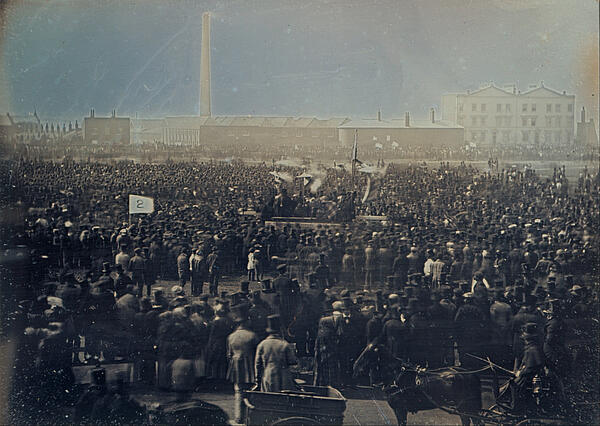Political Changes
Political changes took a long time coming from 1750 to 1900, and those that were introduced in the mid-19th century are not seen as having a huge impact.
For the first 80 years of this period, no change took place. It was still only men with money and property rights that were able to vote, while women, under no circumstances, were afforded the vote. In Parliament, the House of Lords was still able to overrule the House of Commons when it came to passing any law, while only men were allowed in either house.
Even as the working class grew in importance during the Industrial Revolution, which relied so heavily on the workers, those at the top levels of society still resisted change. The example of the uprising of the working class across the channel in France during the French Revolution was precisely what Britain’s controlling elite wanted to avoid.

The was also the common view that only the elite had the power and knowledge to be able rule, so empowering the lower classes would be a waste of time. This meant that even important cities that had boomed as a result of the Industrial Revolution - Liverpool, Manchester, Birmingham - were still hardly represented in the House of Commons.
Whenever it looked like the working classes might rise up, the government answered by threatening brutality. For example, in 1819, a mass meeting was held in Manchester in which people put forward arguments for parliamentary reform, with Orator Hunt the main speaker at the event. Although it was intended to be a non-violent event, halfway through and local magistrates sent in the cavalry, quite literally, to put an end to proceedings. The charging cavalry resulted in 11 people dying and a further 400 being injured. The incident was later dubbed "Peterloo", as it took place at St Peter’s church and was a mockery of the battle of Waterloo.
Nevertheless, political unrest continued to grow, even in the face of the violent backlash protesters faced. To make matters worse for the upper class, the educated middle class also began to side with the working class.
And so, when William IV came to throne in 1830, he reluctantly introduced change in an attempt to satisfy the revolutionaries. Two years later, in 1832, The Great Reform Act was passed, which saw the following changes:
There was a clampdown on Rotten Borough, with 56 of them removed as constituencies
A further 30 smaller constituencies had their number of MPs dropped from two to one
Meanwhile the larger cities that had grown as a result of the Industrial Revolution gained many more MPs
Much of the middle class gained the right to vote
In total the number of people, all men, who were able to vote rose from 435,000 to 652,000
Issues still remained however; only one in seven men could vote, and still no women, while there were also no secret ballots so people would know who you were voting for.
The Great Reform Act divides opinion - while some see it as a step in the right direction, others say it achieved little and should have gone much further.
By the time Queen Victoria was crowned in 1837, there was still hunger for further change. Indeed there was a general belief that she might help women gain more power, but this did not happen for two main reasons. Firstly, the men who held the power were not willing to support any such change. And secondly, and more importantly, Queen Victoria supported the traditional view of a woman that should stay at home.
Developed in the late 1830s, the Chartists emerged as the group who would push for further reform, particularly for the working class. Although this came to an end in 1848, it was the first sign of the working class organising itself and making its political voice heard.
Its impact is shown by the development of New Model Unions from 1851 onwards. Initially for groups of workers with the same skills, this later became a group for all the working class and it would eventually give birth to what we now would call the Labour Party.
The renewed calls for change could not be ignored and in 1867 the Second Reform Act was passed. This allowed richer workers from industrial to vote and increased the total numbers of eligible voters to 2.5 million. It also saw cities given greater weight in Parliament, with 45 small rural constituencies moved into the towns and cities instead.
It still had many drawback though. Again, the most obvious one was that women could not vote, and nor could poor men. Furthermore, there was still no secret ballot.
Two of the main politicians at the time - William Gladstone and Benjamin Disraeli - were an example that politics was changing, with the aristocracy’s control on power loosening.
And further changes were to come: the Secret Ballot Act was passed in 1872, and is still in practice today, allowing voters to keep their votes private.
And 12 years later, in 1884, parliament passed the Third Reform Act. This further increased the number of working class men with the vote, meaning that 5 million men could now vote, although still no women.
It was at this stage that women began to push for the vote and this movement would then to develop into the Suffragettes.
MLA Citation/Reference
"Political Changes". HistoryLearning.com. 2025. Web.
